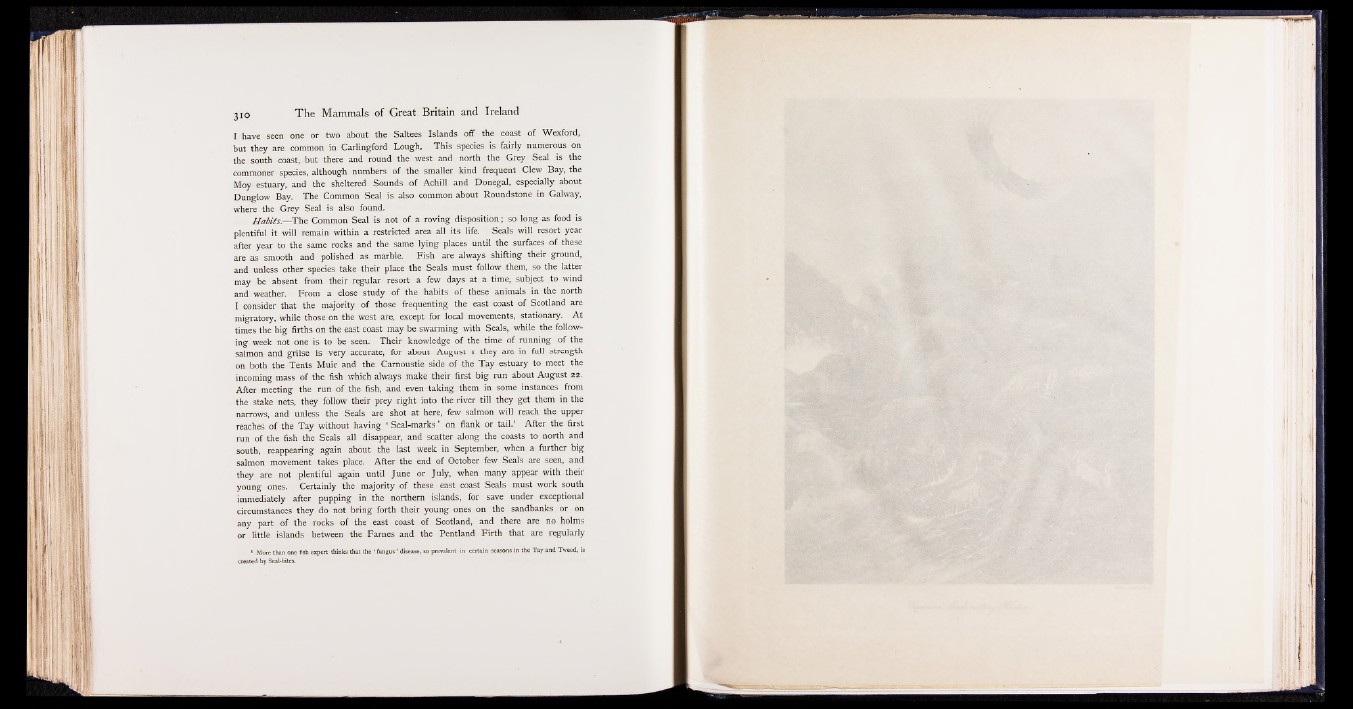
I have seen one or two about the Saltees Islands off the coast of Wexford,
but they are common in Carlingford Lough. This species is fairly numerous on
the south coast, but there and round the west and north the Grey Seal is the
commoner species, although numbers of the smaller kind frequent Clew Bay, the
Moy estuary, and the sheltered Sounds of Achill and Donegal, especially about
Dunglow Bay. The Common Seal is also common about Roundstone in Galway,
where the Grey Seal is also found.
H abits— The Common Seal is not of a roving disposition; so long as food is
plentiful it will remain within a restricted area all its life. Seals will resort year
after year to the same rocks and the same lying places until the surfaces of these
are as smooth and polished as marble. Fish are always shifting their ground,
and unless other species take their place the Seals must follow them, so the latter
may be absent from their regular resort a few days at a time, subject to wind
and weather. From a close study of the habits of these animals in the north
I consider that the majority of those frequenting the east coast of Scotland are
migratory, while those on the west are, except for local movements, stationary. At
times the big firths on the east coast may be swarming with Seals, while the following
week not one is to be seen. Their knowledge of the time of running of the
salmon and grilse is very accurate, for about August i they are in full strength
on both the Tents Muir and the Carnoustie side of the Tay estuary to meet the
incoming mass of the fish which always make their first big run about August 22.
After meeting the run of the fish, and even taking them in some instances from
the stake nets, they follow their prey right into the river till they get them in the
narrows, and unless the Seals are shot at here, few salmon will reach the upper
reaches of the Tay without having ‘ Seal-marks * on flank or tail.1 After the first
run of the fish the Seals all disappear, and scatter along , the coasts to north and
south, reappearing again about the last week in September, when a further big
salmon movement takes place. After the end of October few Seals are seen, and
they are not plentiful again until June or July, when many appear with their
young ones. Certainly the majority of these east coast Seals must work south
immediately after pupping in the northern islands, for save under exceptional
circumstances they do not bring forth their young ones on the sandbanks or on
any part of the rocks of the east coast of Scotland, and there are no holms
or little islands between the Fames and the Pentland Firth that are regularly
1 More than one fish expert thinks that the ‘ fungus ’ disease, so prevalent in certain seasons in the Tay and Tweed, is
created by Seal-bites.